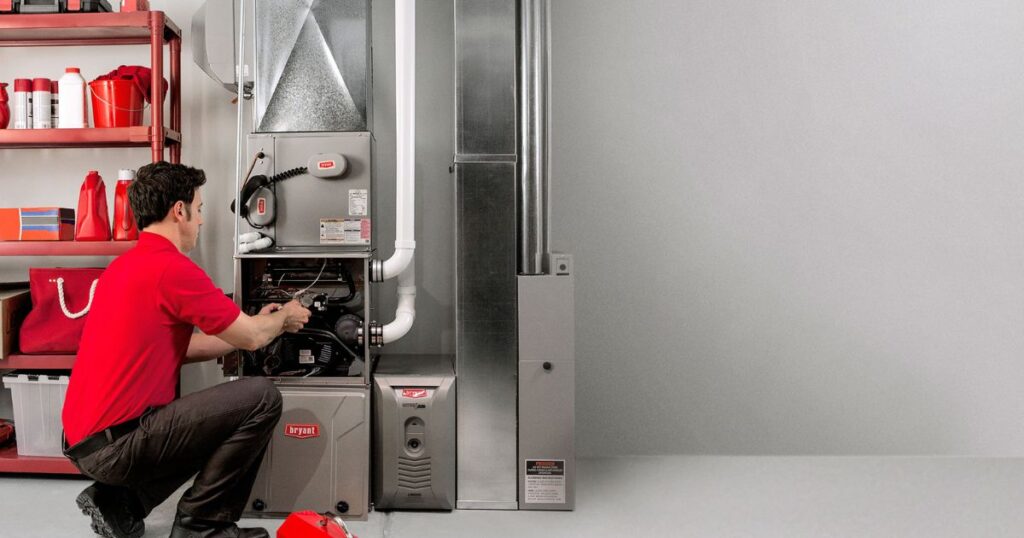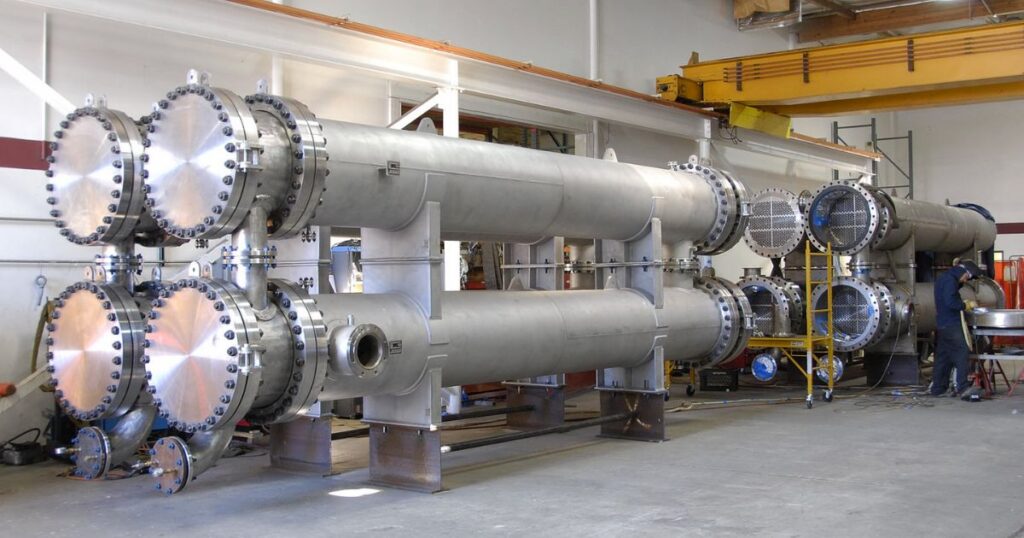A reliable heating system is crucial for maintaining a comfortable indoor environment during the chilly winter months. However, few things are more frustrating than dealing with a furnace that won’t stay on, leaving you and your family in the cold.
This comprehensive guide will explore why furnaces fail to stay lit and provide valuable troubleshooting insights to help you address these issues effectively.
How Furnace Ignition Systems Work
Before diving into the potential problems, it’s essential to understand the basic sequence of operations for a typical gas furnace ignition system. While the exact process may vary slightly among different models, most furnaces follow a similar pattern:
- The thermostat detects a drop in temperature and signals the furnace to initiate the heating cycle.
- The draft inducer motor kicks in, circulating fresh air into the combustion chamber – a critical safety feature.
- For furnaces with a pilot light, the gas valve opens, allowing gas to flow to the pilot burner, which is then ignited by an electrical spark. In the case of direct-ignition furnaces, there is no pilot light; instead, a flame sensor is used.
- Once the pilot light is successfully lit, the flame sensor confirms its presence and signals the furnace to proceed.
- Gas is then transferred through the valves to the main burners, allowing the furnace to generate heat.
Given the involvement of gas in the heating process, it’s crucial to prioritize safety considerations and address any issues promptly to avoid potential hazards.
What Commonly Goes Wrong With A Gas Furnace

Several factors can contribute to a furnace’s inability to stay on, ranging from minor issues to more severe safety concerns. Here are some of the most common culprits:
- Age-related wear and tear on the furnace components
- Improper furnace sizing for the home
- Overheating due to a faulty heat exchanger
- Insufficient airflow or inadequate gas pressure
- Malfunctioning ignition board, flame sensor, light switch, thermostat, thermocouple, fan limiter, or draft inducer fan
- Blocked drainage lines, leading to a full condensate pan
- Extreme temperature conditions that prevent the furnace from staying lit
Flame Sensor Is Triggered
The flame sensor ensures the gas valve opens only when flames are actively burning. If the valve remains open without a verified flame, dangerous gas accumulation can occur, posing a risk of gas leaks, fires, or even explosions.
While this scenario may sound alarming, there are typically warning signs before reaching a worst-case situation.
Signs of gas accumulation due to a triggered flame sensor:
- Water leaks or puddles around the furnace
- Yellow burner flames, indicating improper carbon monoxide venting
- Rusted or corroded flue lines, signaling issues with gas venting
- Furnace age contributing to flame sensor malfunction
- Unexpectedly high utility bills, which can sometimes indicate furnace inefficiency
If you suspect issues with your flame sensor or insufficient gas flow, it’s crucial to have your system inspected and repaired by a professional furnace repair technician.
The Thermostat Is Malfunctioning
The thermostat is the communication hub between you and your furnace, signaling when to turn on or off based on the desired temperature settings. If the thermostat malfunctions, it can send incorrect signals to the furnace, resulting in erratic behavior, such as failing to ignite or overheating.
How To Fix A Malfunctioning Thermostat?
In some cases, a simple solution may be to replace the thermostat with a new one, allowing for proper communication with the furnace. However, if the issue persists or appears more complex, it’s best to seek professional assistance from an HVAC technician to correctly diagnose and resolve the thermostat problem.
Your Furnace Has A Defective Draft Inducer Motor
The draft inducer motor is vital in venting gases from the combustion chamber and supplying fresh oxygen to the furnace burner.
When this component malfunctions, the pressure switch that measures airflow may not detect the correct flow rate, causing the heat exchanger to close prematurely or remain open continuously.
How To Fix A Defective Draft Inducer Motor?
Due to the intricate nature of draft inducer designs and the potential safety risks associated with gas furnaces, seeking professional furnace repair services is strongly recommended rather than attempting a DIY fix.
Attempting repairs on components like blower motors, pressure switches, and draft fans without proper training and expertise can exacerbate the issue or create new hazards.
Your Furnace Has A Dirty Flame Sensor
One of the most common furnace problems is a dirty flame sensor. A telltale sign of this issue is when your furnace turns on but shuts off within seconds, repeatedly cycling on and off. This behavior is often caused by a buildup of dirt or residue on the flame sensor, preventing it from accurately detecting the flame.
How To Fix A Dirty Flame Sensor?
Cleaning the flame sensor is the only way to address this problem. However, following the proper steps is essential to avoid further complications. Here’s the general process for troubleshooting a dirty flame sensor:
- Turn off the furnace completely.
- Access the combustion chamber and locate the flame sensor.
- Carefully remove the sensor and clean off any dirt, rust, or buildup using light-grit sandpaper, emery cloth, or steel wool.
- Replace the cleaned sensor.
- Test the furnace to ensure the issue is resolved.
While this process may seem straightforward, it’s often safer and more effective to schedule professional service from a qualified HVAC technician. This technician has the expertise and tools to clean the flame sensor correctly.
The Furnace’s Thermocouple Is Broken Or Malfunctioning
The thermocouple is crucial for detecting whether the pilot light is functioning properly. If it goes out, the thermocouple is designed to prevent unburned gas from flowing through the valves by closing them.
However, if the thermocouple malfunctions or breaks, it can cause the gas valves to operate abnormally, leading to furnace issues and potential safety hazards.
How Can I Fix A Broken Thermocouple?
Given the safety implications of a faulty thermocouple, it is strongly recommended that you seek professional furnace repair services rather than attempt a DIY fix.
Attempting to repair or replace the thermocouple without proper knowledge and experience can put your household at risk of gas leaks or other dangerous situations.
Heat Exchanger Is Broken

The heat exchanger is a critical component that transfers heat from the combustion process to the air circulating throughout your home. However, if the heat exchanger breaks or develops a crack, it can lead to overheating issues and potentially dangerous consequences.
What Does A Broken Heat Exchanger Mean For My System?
When the heat exchanger overheats, it can limit the proper venting of combustible gases, leading to potential gas leaks, fires, or even explosions. These risks underscore the importance of addressing a broken heat exchanger promptly and professionally.
If you suspect issues with your heat exchanger, such as abnormal noises, strange odors, or decreased heating efficiency, it’s crucial to schedule furnace repair services immediately. Attempting to operate a furnace with a faulty heat exchanger can compromise the safety of your home and loved ones.
Also Read: How Often Should You Replace Kitchen Cabinets?
FAQs
Why does my furnace not want to stay running?
Common reasons include a dirty flame sensor, malfunctioning thermostat, defective draft inducer motor, broken thermocouple, or a cracked heat exchanger.
Why does my furnace turn on and then shut off?
This can be caused by a dirty flame sensor, overheating due to a faulty heat exchanger, or a malfunctioning thermostat.
Why does my furnace ignite but not stay lit?
A dirty or faulty flame sensor is often the culprit, as it prevents the furnace from detecting a flame and shuts off as a safety measure.
Why does my furnace keep kicking out?
Possible reasons include insufficient airflow, inadequate gas pressure, blocked drainage lines, or issues with the ignition system components, such as the flame sensor or thermocouple.
Conclusion
Dealing with a furnace that won’t stay on can be frustrating and potentially hazardous, especially during the cold winter months. By understanding the common reasons behind this issue, such as flame sensor problems, thermostat malfunctions, defective draft inducer motors, dirty flame sensors, broken thermocouples, and faulty heat exchangers, you can promptly address the problem.
However, it’s important to prioritize safety over DIY repairs, particularly when dealing with gas-powered furnaces. Many components involved in the ignition and combustion processes require specialized knowledge and expertise to diagnose and repair correctly. Attempting DIY fixes without proper training can lead to further complications or even create dangerous situations.
Therefore, it’s highly recommended to seek the assistance of professional HVAC technicians or furnace repair specialists. These experts have the necessary training, tools, and experience to accurately diagnose and resolve furnace issues while ensuring the safety of your home and family.
By being proactive and scheduling regular maintenance and inspections, you can potentially prevent many furnace problems from occurring in the first place. However, if you encounter issues with your furnace staying lit, don’t hesitate to contact a reputable HVAC company for prompt and reliable service.







